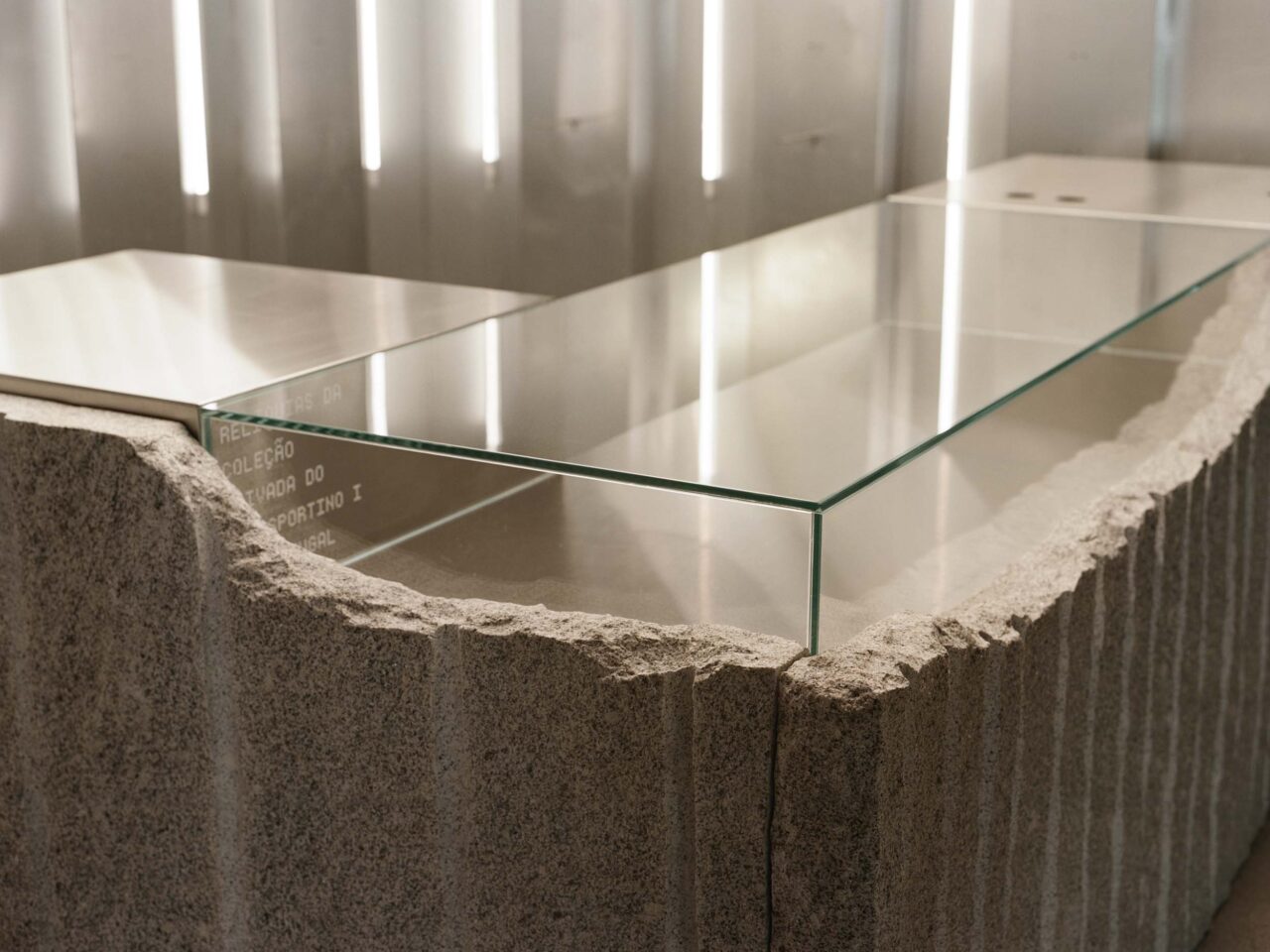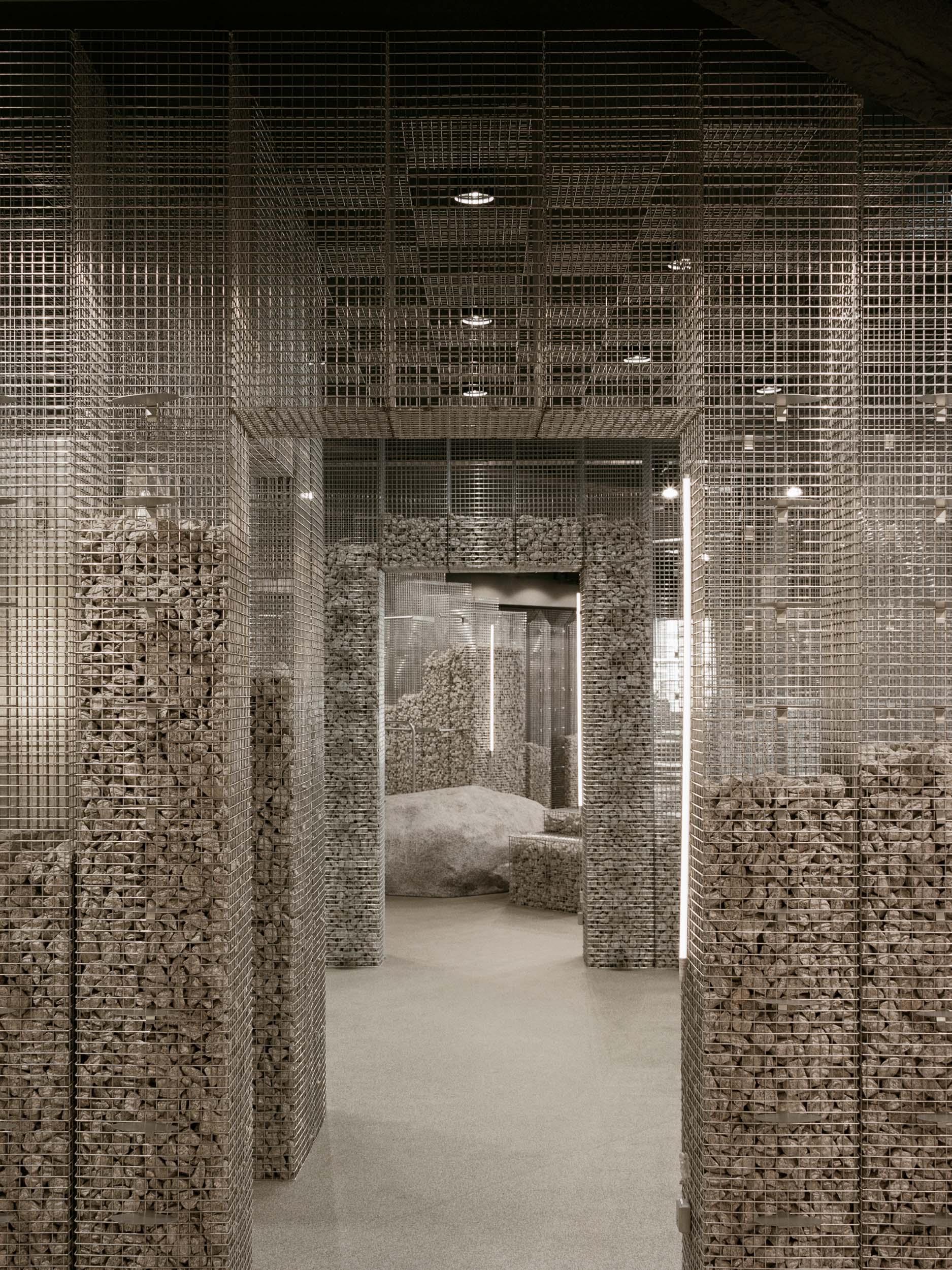In Guimarães, Portugal, medieval architecture dots the rolling hills of the northern city. It’s here where the country’s first king, Afonso Henriques, was born in the city’s titular castle, a foundational fortress, built in the 10th century, that encapsulates the origin of the country. It’s this national and architectural history that inspired the design of Store 1G, a clothing and shoe store in Guimarães.
Under the helm of Estudio Além, a Spain-based architecture studio founded by Paula Navarro Mazón and Filipe Nunes Faustino (who led the project), the store merges the medieval ancestry of the surrounding area with a dizzying modern sensibility. The duo set out to achieve two goals. First, to design a visually striking atmosphere that encourages an elevated user-experience, which they achieved with their evocations of the city’s castle. Second, to do so in a way that accentuates the store’s offerings.


The perimeter of the store is continuously lined with electro-welded wire mesh structures made of galvanized steel that abstract and modernize the battlements of the castle. These structures are filled with 23 tons of local granite stone, crushed into particle sizes to line the mesh formations like regal gabions.
Together, the stone-filled structures accentuate the proportions of the interior space and delineate areas, a layout that directly references the city’s ramparts to craft a maze of steel and stone that encourages visitors to linger and peruse. Beyond their decorative qualities, the gabion walls also provide an intriguing display case for a variety of goods, including shoes, clothing, and mirrors.

Elsewhere, cork clads the ceiling and surrounding walls, adding depth and texture to the environment that accentuates the glinting metallic mesh. Pathways lead to the front counter, which Mazón and Faustino knew needed to be clear and identifiable for shoppers. As such, the counter is a striking juxtaposition of two imperfect granite blocks (also taken from the quarry) and from which a glass and steel compartment emerges. It’s emblematic of the store’s design ethos as a whole: to merge the medieval with the modern.


Past and present permeate the rest of the space, from the solid granite blocks that act as benches for people to try on shoes to the stainless steel cubicle fitting room. In fact, a duality is omnipresent within the store overall. Lightness and darkness, steel and stone, clean geometric lines and spontaneous edges: each element adds to the ethereal contradiction that is Store 1G.
